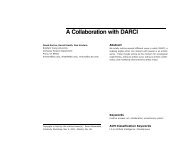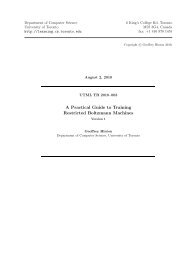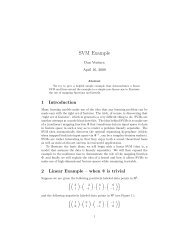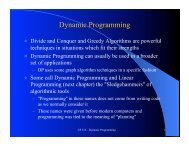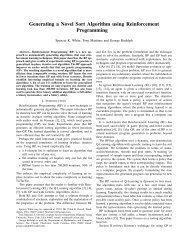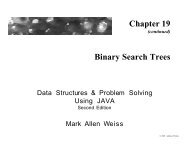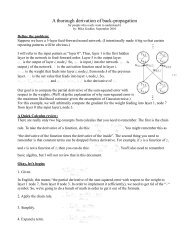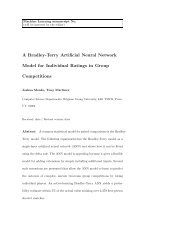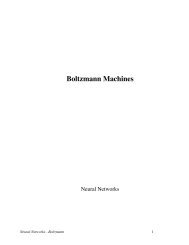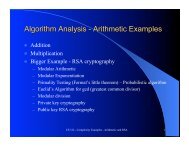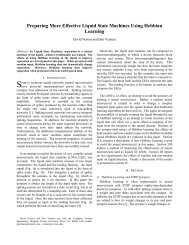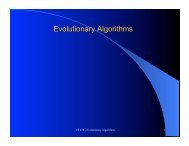Toward Optimal Active Learning through Sampling ... - CiteSeerX
Toward Optimal Active Learning through Sampling ... - CiteSeerX
Toward Optimal Active Learning through Sampling ... - CiteSeerX
You also want an ePaper? Increase the reach of your titles
YUMPU automatically turns print PDFs into web optimized ePapers that Google loves.
e<br />
e<br />
the unlabeled examples, adding it to the training set with a<br />
sample of its possible labels, and estimating the resulting<br />
future error rate as just described. This seemingly daunting<br />
sampling and re-training can be made efficient <strong>through</strong><br />
a number of rearrangements of computation, careful sampling<br />
choices, and efficient incremental training procedures<br />
for the underlying learner.<br />
We show experimental results on two real-world document<br />
classification tasks, where, in comparison with densityweighted<br />
Query-by-Committee we reach 85% of full performance<br />
in one-quarter the number of training examples.<br />
mate it using the current learner. 1 (For log loss this results<br />
in estimating the error by the entropy of the learner’s posterior<br />
distribution).<br />
Writing the documentsdT labeled<br />
Q, for log<br />
loss we have<br />
¡§Q£Q¨as<br />
and for 0/1 loss<br />
(3) ) C ¥c ¥f -9Lg f 7U9: @ \¡£¥§©¨=?¡@ \¡£¥§¨¨N &'\ #4$<br />
2. <strong>Optimal</strong> <strong>Active</strong> <strong>Learning</strong> and <strong>Sampling</strong><br />
Estimation<br />
The optimal active learner is one that asks for labels on the<br />
examples that, once incorporated into training, will result<br />
in the lowest expected error on the test set.<br />
be<br />
Let<br />
inputs,§,<br />
¢¡§¨be<br />
and output classes,££££©,and<br />
let<br />
¢¡¤£¦¥§©¨<br />
an unknown conditional distribution over<br />
the marginal “input” distribution. The learner<br />
is given a set, labeled training<br />
¢¡£¥§©¨,and<br />
, consisting of IID input/output<br />
pairs drawn from estimates a<br />
classification function that, given an input§, produces an<br />
"¡£¥§©¨. estimated output We can then write<br />
the expected error of the learner as follows:<br />
¢¡§¨<br />
distribution!<br />
is some loss function that measures the degree<br />
of our disappointment in any differences between the true<br />
¢¡£¥§¨and ¡¤£¥§¨.<br />
where.<br />
prediction, distribution, the learner’s<br />
Two common loss functions are:<br />
log<br />
and 0/1 A¡¤£¥§¨¨ ¢¡£¥§©¨=?¡@ loss:.4)65879:<br />
(1)<br />
¡0 ¢¡£¥§©¨1 ! "¡£¥§©¨2¨3 ¢¡§¨1 &('*),+-/. #%$<br />
"¡£OP¥§©¨2¨.<br />
First-order Markov active learning thus aims to select a<br />
query,§RQ, such that when the query is given and<br />
.B),5879: @ ¢¡£¥§©¨¡CEDGF¡£2HI2?3J¢HLK7NM¤9:<br />
label£SQ<br />
added to the<br />
¡§RQ



